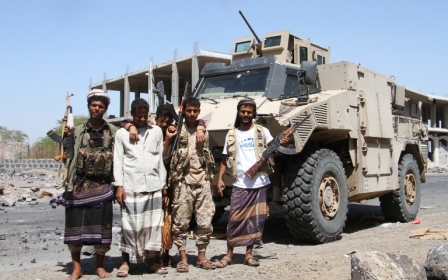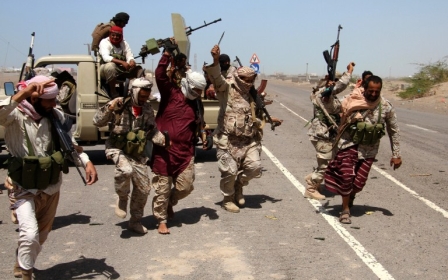Nine women, child killed in raid on Yemen funeral

Nine women and a child were killed in an overnight air raid on a funeral reception near the Yemeni capital Sanaa, medics said on Thursday.
At least 10 more women were reported wounded in the raid, which hit the women's reception area at a funeral in Arhab district, 40 kilometres north of Sanaa.
Some local news sites put the number of dead and wounded far higher, although the higher tolls have yet to be confirmed by the Houthi-run health ministry.
"People heard the sound of planes and started running from the house but then the bombs hit the house directly. The roof collapsed. Blood was everywhere," a resident of the village, Ashira, told a Reuters cameraman on Thursday.
Pictures published in local media showed tribesmen searching through the rubble of a destroyed house said to belong to Mohammed al-Nakaya, a tribal chief allied with Yemen's Houthi movement.
Another picture showed a man kneeling in the dust with the corpse of an elderly woman in his arms.
It was not immediately possible to verify the authenticity of the pictures.
Supporters of the Houthis, including a spokesperson for the group, alleged that the raid was a so-called "double tap strike," meaning that a second bomb exploded shortly after the first, killing and wounding those who went to aid people hit initially.
Houthi rebels, who control the capital, accused a Saudi-backed coalition of carrying out the strike and fired a rocket towards Saudi territory overnight. The rocket was intercepted without causing any damage.
A coalition spokesperson was not immediately available to comment on allegations it was behind the attack.
A post on the Houthi-run saba.ye news website late Wednesday gave an initial toll of six women killed and 10 wounded.
Casualties were transported to hospitals in Sanaa.
Yemen's conflict spiralled in March 2015 when the coalition began targeting the Houthi rebel group, which seized control of Sanaa in September 2014.
The United Nations says more than 7,400 people, including around 1,400 children, have been killed since then in the fight for territorial control across the country.
'Incorrect information'
The Saudi-led coalition has faced repeated allegations of targeting weddings, funerals, schools and hospitals in Yemen.
The coalition maintains it does not deliberately target civilians.
But in October it admitted to killing 140 people in an air strike on a funeral in Sanaa, blaming the deaths on "incorrect information" after initially denying involvement.
International rights group Human Rights Watch on Thursday released a report blaming the coalition for a 10 January air strike on a market.
The strike, which hit near a school in the rebel-held northern Nihm province, killed five people, including at least one child.
"The bombing death of an 11-year-old girl on her way to school shows how little the Saudi-led coalition took to heart its brief inclusion on the UN secretary-general's 'list of shame'," said HRW's Middle East director Sarah Leah Whitson.
The UN in June added the Saudi-led coalition to a blacklist of child rights violators over its involvement in Yemen, though it was later removed.
A 14-member independent team tasked with investigating strikes on Yemen last year acknowledged "shortcomings" in some coalition strikes.
The team includes coalition states Bahrain, Kuwait, Qatar, Saudi Arabia and the United Arab Emirates, as well as the government of Yemeni president in exile Abd Rabbuh Mansour Hadi.
However, it also receives significant technical and material support from Saudi Arabia's western allies, including the US and the UK, which are facing mounting calls to end their involvement over allegations of violations of international law by the coalition.
Middle East Eye propose une couverture et une analyse indépendantes et incomparables du Moyen-Orient, de l’Afrique du Nord et d’autres régions du monde. Pour en savoir plus sur la reprise de ce contenu et les frais qui s’appliquent, veuillez remplir ce formulaire [en anglais]. Pour en savoir plus sur MEE, cliquez ici [en anglais].




